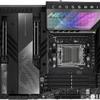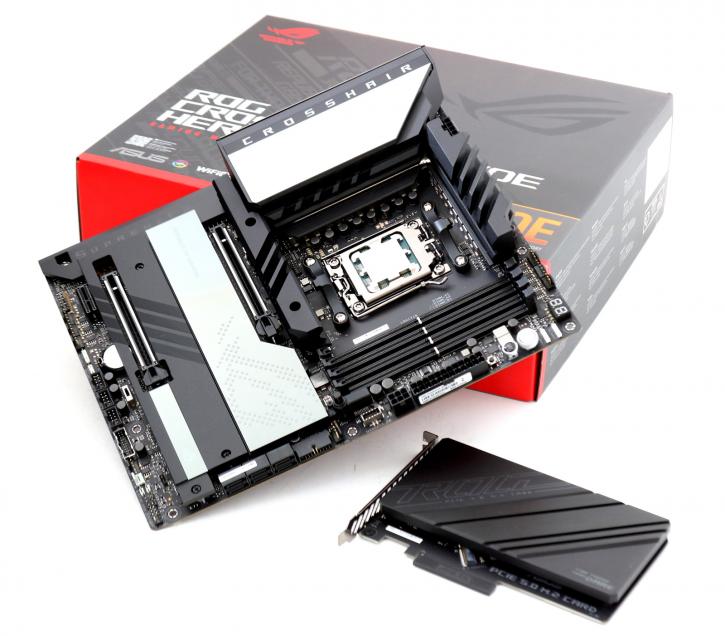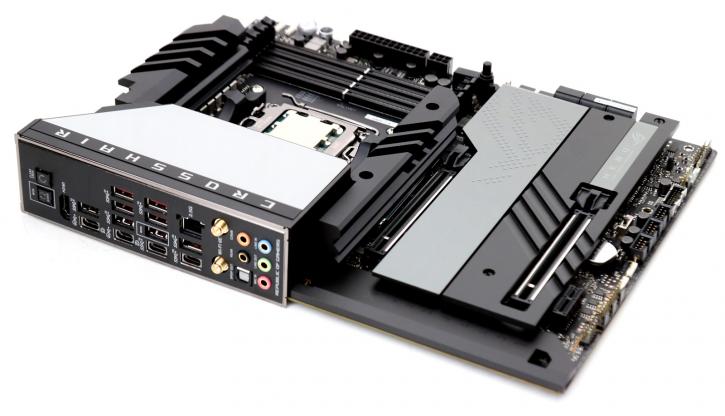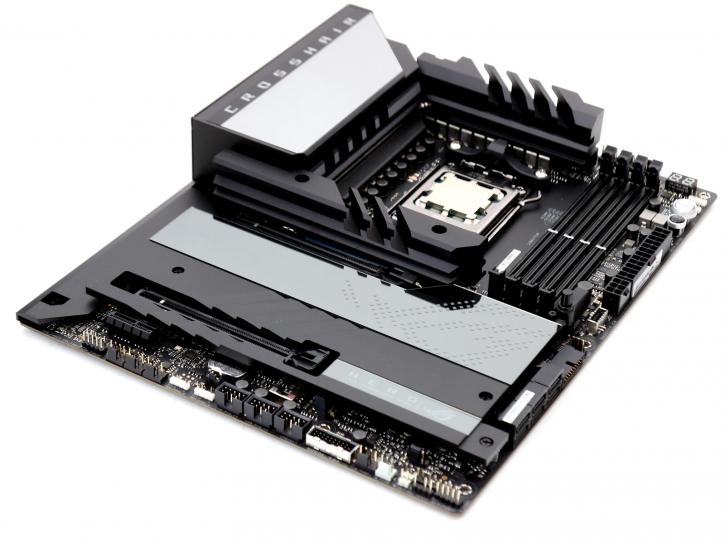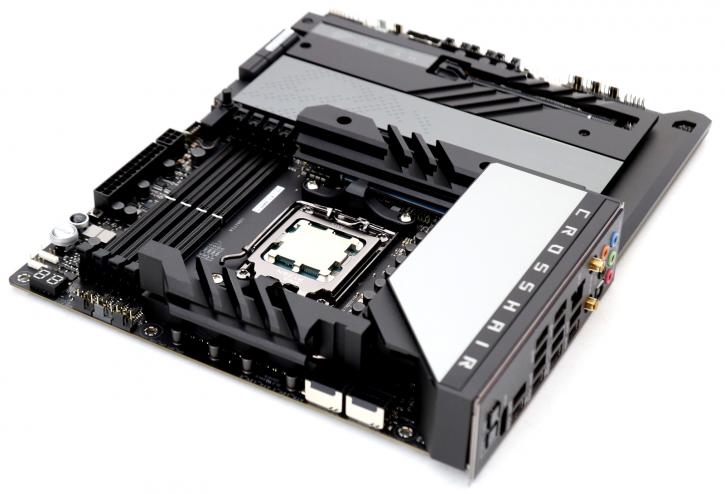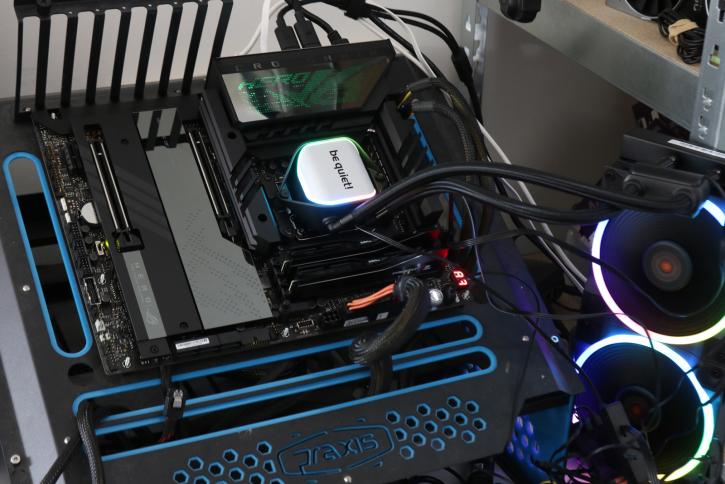Product Showcase
Showcase - ASUS ROG Crosshair X670E Hero
We had the opportunity to examine the ROG Crosshair X670E Hero from ASUS. The Crosshair X670E Hero motherboard from ASUS is a powerful product. There are five M.2 slots on this new motherboard, two of which are PCIe 5.0 compliant and three PCIe 4.0 compatible. This motherboard includes two PCIe 5.0 16x slots and a single PCIe x1 slot. The implementation of PCIe 5.0 and PCIe 4.0 across the circuitry differs between the X670E and X670 boards. The "E" in X670E stands for "Extreme," and it ensures that the board has a PCIe 5.0 x16 slot and at least one PCIe 5.0 M.2 socket. The majority of ROG Strix X670E offerings have at least two onboard PCIe 5.0 M.2 slots, the ROG Crosshair X670E Extreme has a total of four PCIe 5.0 slots between onboard slots and bundled are add-in cards. Because higher-end and larger-capacity M.2 SSDs generate more heat, ASUS also beefed up up cooling. To aid in heat dissipation, many of the M.2 slots include a dual-sided M.2 heatsink.
This motherboard's 18+2 teamed power stages rated 110A will effortlessly deliver stable power to your CPU. Significantly integrated heatsinks keep the circuitry cool, and a diverse set of headers allows you to configure your ideal cooling solution.
Its two PCIe 5.0 x16 slots are ready to accept next-generation graphics cards-or the included PCIe 5.0 M.2 card, which adds a third Gen 5 M.2 slot to the two onboard PCIe 5.0 slots. The Hero's feature set is completed by high-end connectivity. WiFi 6E gives you unrestricted access to the newly opened 6 GHz band for wireless networking with compatible routers in select regions. The X670E Hero's rear I/O reveals two USB4 ports, nine USB 3.2 Gen 2 connectors, a single USB 3.2 Gen2x2 port, HDMI output, a 2.5Gb ethernet port (Intel I225-V)), and WiFi 6E antennae. There are normal audio connectors, a BIOS flashback button, and a clean CMOS button along with these inputs and outputs.
With PCIe 5.0 connectivity, you can use a wide range of high-speed ports right now, and you'll be able to use the fastest SSDs and GPUs when they come out. With link speeds that are twice as fast as PCIe 4.0, the new standard gives us enough space to add USB 3.2 Gen 22 ports to these boards and two USB4 ports to the ROG Crosshair X670E Hero. Since a lot of gamers use their PC's USB ports on the front panel to connect fast external storage, these motherboards have a USB 3.2 Gen 22 connector on the front panel.
This hardware should be sufficient for most people to handle any use case you can throw at it, providing that ultra-advanced capabilities such as 10Gb Ethernet are not required. Need to charge other devices with those ports, too quickly? Combine the X670E Hero board with a case with a USB Type-C port on the front so you can use Quick Charge 4+ to charge at 60W.
- Header Cooling2x CPU fan 4-Pin, 4x fan 4-Pin, 1x AIO-pump 4-Pin, 1x pump 4-Pin, 1x Thermal-sensor, 1x flow rate-sensor
- Header Lighting1x 4-Pin RGB (+12V/G/R/B, max. 3A), 3x 3-Pin ARGB (+5V/DATA/GND, max. 3A, ASUS Gen2)
ASUS has added Polymo Lighting, a huge number of Addressable RGB headers, and the company's newest SUPREMEFX ALC4082 CODEC audio technology to their X670E Hero motherboard. With an audiophile-grade ESS ES9218 Quad DAC pumping top-notch sound to the front-panel output, you can enjoy pristine audio for competitive gaming and entertainment alike. This audio solution is ideal for plugging in a high-end headset because it has an excellent signal-to-noise ratio.
